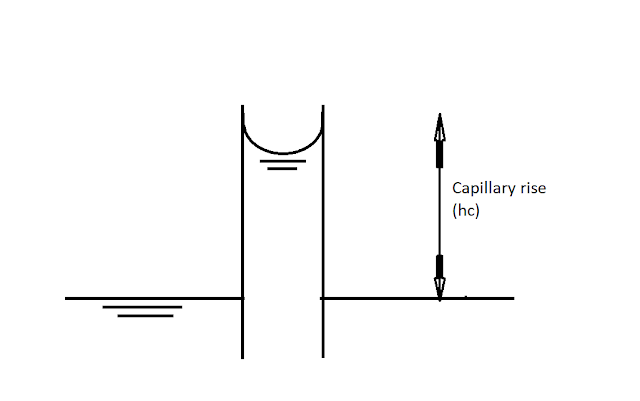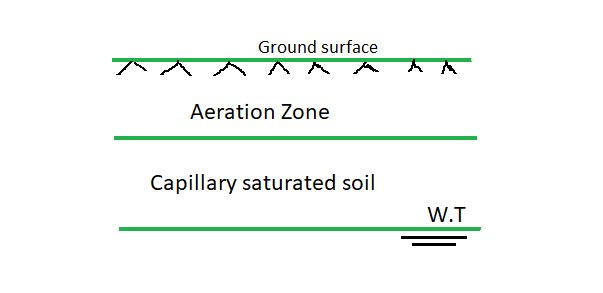Capillary Rise in the tube.
Basically, water rise in small diameter tube because of adhesion and cohesion
Adhesion- its Because of water stick to the solid wall of a tube
Cohesion – It is an attraction of water molecules.
If adhesion effect more than cohesion the water molecule push each other and liquid rise.
in case of cohesion effect more than adhesion liquid fall, example- the case of mercury.
Capillary rise action in soil
the reason for the capillary rise in the soil is an air-water interface.
As soon soil submerging to water the air-water interface destroyed and at the end when soil fully immerses capillary water become normal water.
we discuss a capillary rise in small dia tube previously now we know soil also contains interstices which behaves like small dia pipe.
dear friends We also know at large dia pipe capillary rise is very small because of the adhesion-cohesion intensity not sufficient or very low.
From these theories, we can say that capillary rise is small in coarse grains soil. because space is large.
and in fine grain soil, space is very litter so capillary rise occurs. also sometimes a very high capillary rise occurs in fine grain soil.
this height to which capillary water rise know as a capillary fringe.
the soil above the capillary fringe contains water in the form of contact moisture.
Factor affecting capillary action
From all the above discussion my friends you easily say what the factor which affects the capillary rise. Ex- Size of soil particles, the water content in the soil, type of soil, etc.



